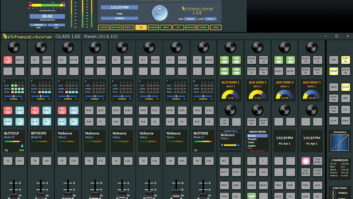Radio World invites industry-oriented commentaries and responses. Send to Radio World. Below is sampling of recent letters to the editor.

Watch Your Foot!
I agree with Ira Wilner’s letter in the Aug. 17 issue, “I Have Concerns About the Cloud,” about using it for radio broadcast operations, but for different reasons.
First, as a former engineer, I feel odd handing off critical parts of a station’s operations to a third party. Doing so with a station’s library, scheduling and billing operations just seems like aiming a gun at your own foot.
Next, the potential of hacking. The cloud has to be a major target for any hacker, from the high school novice to the actual malicious actor.
For now we have a choice. Choose wisely.
– Archie Stulc
Pondering “The Cloud”
As always, your Aug. 17 edition was another enjoyable issue of my favorite magazine!
I agree with Ira Wilner’s concerns about this popular trend towards putting everything in “the cloud.” We’ve already experienced that in the OTA-TV world with multiple “Titanic deck chair shuffles” that considerably shrank the available spectrum in favor of those “20,000-pound gorilla” wireless providers, which also caused a number of less-fortunate passengers to “share” some of the remaining “seats.”
In the “olden days,” each station had its own complete (and unique) “chain” from microphone to antenna. A failure in one part did not necessarily take down the others, particularly during emergencies.
Imagine a future where all broadcasters are but “passengers” on a single “liner,” and that “boat” hits an “iceberg.”
I also share his mistrust of “cloud-based” software, which ensures continuing revenue for Microsoft, et al. When I needed a word processor or spreadsheet for my new Win10 PC, the obvious choice would have been MS Office, but it was available only by “subscription.” After a little research, I found the free (and compatible) LibreOffice, which does it all and is regularly supported, and everything stays “on-Earth.”
Yes, Ira, it sure does look like a new “Wild West.” Thankfully, that federal agency that was once tasked with regulating our spectrum’s users to prevent interference and prevent “concentration of media control” no longer has to concern itself with any of that “old fuddy-duddy” stuff.
– Michael Shovan, CBTE (Life)
More on Mono
Food for thought regarding analog FM stereo reception in automobile receivers (“Turn Off the Stereo and See What Happens,” RW Aug. 17):
Most if not all OEM automobile receivers currently in use have dynamic “stereo blend” circuitry that is constantly adjusting stereo separation and high-frequency response, this as signal strength varies. For this reason, at least some of the time, FM stereo reception in an automobile is actually near mono reception.
For example, the older Sanyo PLL FM MPX stereo demodulator IC LA 3430, designed for FM car stereo use, afforded this “stereo blend” feature as a means for improving signal-to-noise under weak signal conditions.
Signal from a receiver’s IF stage (which varies with signal strength) is applied to Pins 7 and 8 of this IC (Pin 7 the high-cut control, Pin 8 being stereo noise control). This control circuitry working in tandem accomplishes a dynamic “stereo blend” process that can actively reduce stereo separation at times to zero and simultaneously reduces high-frequency audio response above 7 kHz or so.
The effect of these combined circuit controls improved the listenability of FM stereo stations in a mobile environment where signal strength is constantly varying.
– Craig R. Seelig, NARTE Certified Engineer











